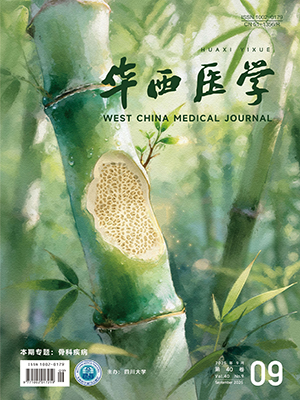| 1. |
张文豪, 李建军, 杨德刚, 等. 双光子显微镜在小动物活体光学成像中的研究进展. 中国康复理论与实践, 2017, 23(1): 37-41.
|
| 2. |
Chen X, Tang S, Zheng JS, et al. Chemical synthesis of a two-photon-activatable chemokine and photon-guided lymphocyte migration in vivo. Nat Commun, 2015, 6: 7220.
|
| 3. |
Li JL, Goh CC, Keeble JL, et al. Intravital multiphoton imaging of immune responses in the mouse ear skin. Nat Protoc, 2012, 7(2): 221-234.
|
| 4. |
Smith RA, Cokkinides V, Brooks D, et al. Cancer screening in the United States, 2010: a review of current American Cancer Society guidelines and issues in cancer screening. CA Cancer J Clin, 2010, 60(2): 99-119.
|
| 5. |
包鹤龄, 方利文, 王临虹. 1990-2014 年中国 40 岁及以上人群慢性阻塞性肺疾病患病率 Meta 分析. 中华流行病学杂志, 2016, 37(1): 119-124.
|
| 6. |
陆月明, 顾秀莲. 急性呼吸窘迫综合征研究进展. 中华流行病学杂志, 2005, 26(6): 463-465.
|
| 7. |
成令忠, 钟翠平, 蔡文琴. 现代组织学. 上海: 上海科学技术文献出版社, 2003.
|
| 8. |
Lefrançais E, Ortiz-Muñoz G, Caudrillier A, et al. The lung is a site of platelet biogenesis and a reservoir for haematopoietic progenitors. Nature, 2017, 544(7648): 105-109.
|
| 9. |
Kreisel D, Nava RG, Li W, et al. In vivo two-photon imaging reveals monocyte-dependent neutro-phil extravasation during pulmonary inflammation. Proc Natl Acad Sci USA, 2010, 107(42): 18073-18078.
|
| 10. |
刘斌. 飞秒激光双光子荧光显微成像技术研究. 哈尔滨: 哈尔滨工业大学: 2012.
|
| 11. |
Terry RJ. A thoracic window for observation of the lung in a living animal. Science, 1939, 90(2324): 43-44.
|
| 12. |
Wearn JT, Ernstene AC, Bromer AW, et al. The normal behavior of the pulmonary blood vessels with observations on the intermittence of the flow of blood in the arterioles and capillaries. Am J Physiol, 1934, 109(2): 236-256.
|
| 13. |
Tabuchi A, Mertens M, Kuppe H, et al. Intravital microscopy of the murine pulmonary microcir-culation. J App Physiol (1985), 2008, 104(2): 338-346.
|
| 14. |
夏伟强, 周源, 石明. 双光子显微成像技术的新进展. 中国医疗器械杂志, 2011, 35(3): 204-208.
|
| 15. |
Headley MB, Bins A, Nip A, et al. Visualization of immediate immune responses to pioneer metastatic cells in the lung. Nature, 2016, 531(7595): 513-517.
|
| 16. |
Vinegoni C, Aguirre AD, Lee S, et al. Imaging the beating heart in the mouse using intravital microscopy techniques. Nat Protoc, 2015, 10(11): 1802-1819.
|
| 17. |
林巧雅, 黄松林, 骆清铭, 等. 肝脏免疫的活体显微光学成像研究进展. 生物化学与生物物理进展, 2017, 44(12): 1056-1065.
|




